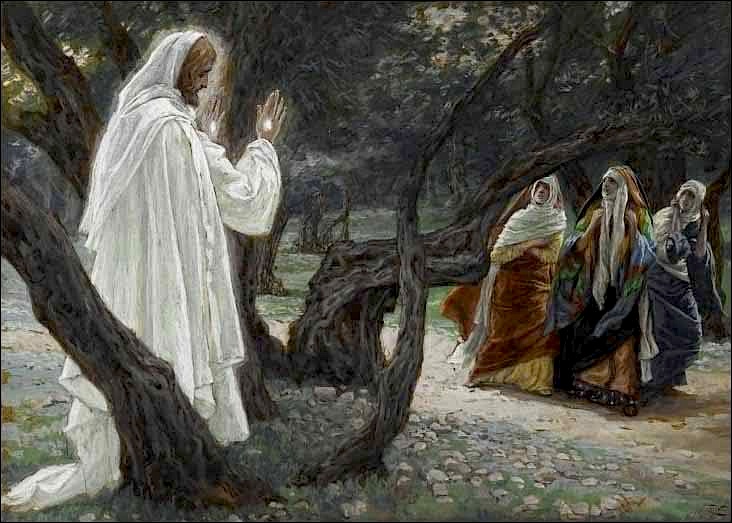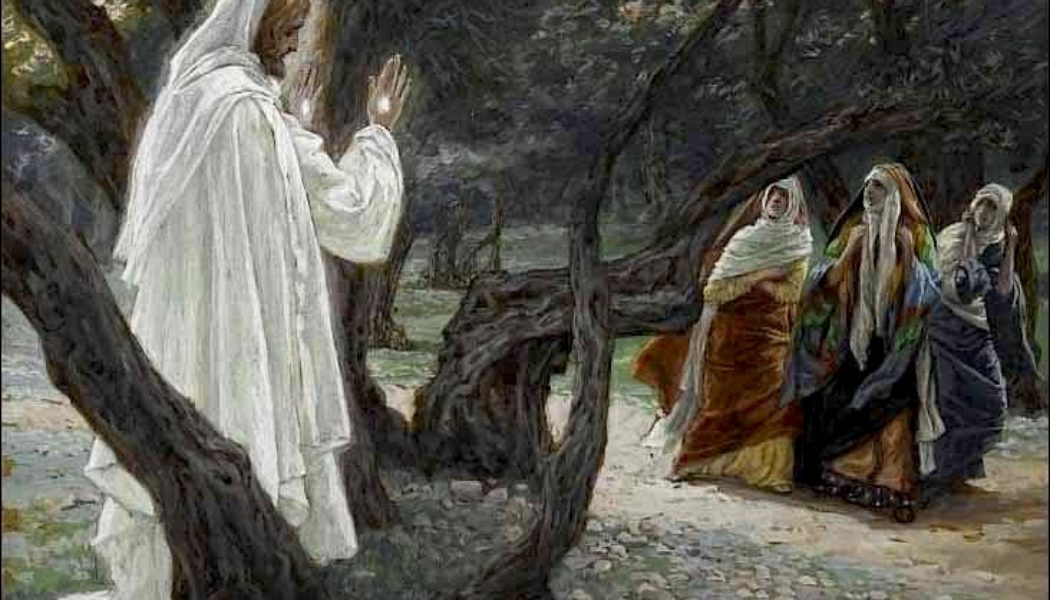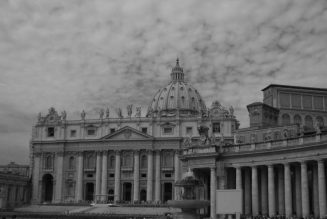
After Christ rose from the dead, He appeared to His disciples at certain places and times, but did not seem to stay with them continuously. On the first Easter Sunday, He appeared six times in rather rapid succession: first to Mary Magdalene, then to the women at the tomb, third as the women left the tomb, fourth to Peter, fifth to the two disciples going to Emmaus, and sixth to the ten Apostles in Jerusalem (when Thomas was not present).
In His public ministry, Jesus seemed to be with His disciples nearly all the time. However, after His Resurrection he would appear, converse, and teach, but then be absent from them bodily. For example, John 20:26 says that “after eight days” Christ appeared to the disciples, suggesting that He was not otherwise present to them during that period.
While it is true that we do not have an exact calendar of His appearances and not every appearance is necessary recorded, it seems apparent that the Lord was not constantly with the disciples during the forty days prior to His ascension.
Why is this?
St. Thomas Aquinas reflected on this question and offers two basic reasons. In so doing he does not propose an absolute explanation, but rather demonstrates why it was fitting that Christ was not with them continuously during the forty days prior to the ascension. St. Thomas writes,
Concerning the Resurrection two things had to be manifested to the disciples, namely, the truth of the Resurrection, and the glory of Him who rose.
Now in order to manifest the truth of the Resurrection, it sufficed for Him to appear several times before them, to speak familiarly to them, to eat and drink, and let them touch Him. But in order to manifest the glory of the risen Christ, He was not desirous of living with them constantly as He had done before, lest it might seem that He rose unto the same life as before … [For as Bede says] “He had then risen in the same flesh, but was not in the same state of mortality as they.”
That Christ did not stay continually with the disciples was not because He deemed it more expedient to be elsewhere: but because He judged it to be more suitable for the apostles’ instruction that He should not abide continually with them, for the reason given above.
He appeared oftener on the first day, because the disciples were to be admonished by many proofs to accept the faith in His Resurrection from the very out set: but after they had once accepted it, they had no further need of being instructed by so many apparitions (Summa Theologiae, Part III, Q. 55, Art. 3).
While St. Thomas observes that there may well be appearances that were not recorded, he is inclined to hold that there were not a lot more of them. He writes,
One reads in the Gospel that after the first day He appeared again only five times. For, as Augustine says (De Consens. Evang. iii), after the first five apparitions “He came again a sixth time when Thomas saw Him; a seventh time was by the sea of Tiberias at the capture of the fishes; the eighth was on the mountain of Galilee, according to Matthew; the ninth occasion is expressed by Mark, ‘at length when they were at table,’ because no more were they going to eat with Him upon earth; the tenth was on the very day, when no longer upon the earth, but uplifted into the cloud, He was ascending into heaven. But, as John admits, not all things were written down. And He visited them frequently before He went up to heaven,” in order to comfort them. Hence it is written (1 Corinthians 15:6-7) that “He was seen by more than five hundred brethren at once … after that He was seen by James”; of which apparitions no mention is made in the Gospels (ibid).
St. Thomas strikes a balance between the Lord’s need to instruct them and summon them to faith in the resurrection, and the need for them to grasp His risen glory. Christ did not merely resume His former life. The disciples were not to cling to their former understandings of Him as Rabbi and teacher; now they were to grasp more fully that He is Lord.
Though Thomas does not mention it here, I would add another reason for the Lord’s action of not abiding with them continuously: It was fitting for Him to do this to accustom them to the fact that they would no longer see Him as they had with their physical eyes. Once He ascended, they would see Him mystically in the Sacraments and in His Body the Church. Thus, as the Lord broke the Bread and gave it them in Emmaus, they recognized Him the Eucharist (Luke 24). Thereupon He vanished from them. It was as if to say, “You will no longer go on seeing me in the same manner. Now you will experience me mystically and in the Sacraments.”
[embedded content]







